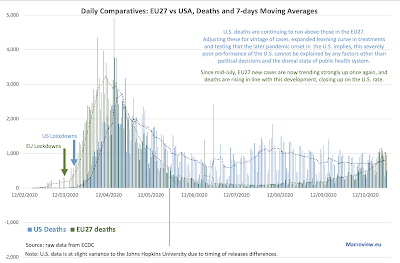BRIC's manufacturing PMIs are out for October, marking the start of Q4 2020. Overall, the results reinforce Q3 2020 trends highlighted here: https://trueeconomics.blogspot.com/2020/10/141020-bric-manufacturing-pmis-q3.html.
- Brazil posted further acceleration in the recovery momentum with Manufacturing PMI rising to 66.7 from 3Q 2020 62.6. 3Q 2020 was the historical record quarter for Brazil's Manufacturing PMI readings. Brazil's Manufacturing PMIs have now strengthened every month since May 2020, the last month of sub-50 readings.
- In contrast to Brazil, Russia Manufacturing PMI slipped again in October, hitting a 5-months low at 46.9, down from 48.9 in September and well below already poor 49.5 reading for 3Q 2020. Prior to 4Q 2020, Russia clocked five consecutive quarters of Manufacturing PMIs below 50.0 mark.
- China Manufacturing PMI rose from 53.0 in 3Q 2020 to 53.6 in October. China's latest reading is on-trend, with rising PMIs for the third quarter in a row.
- India Manufacturing PMI stood at 51.6 in 3Q 2020 and this improved to 58.9 in October, marking a major acceleration in growth conditions.
- Three of the BRIC economies have posted October Manufacturing PMI readings more robust than Global PMI reading of 53.0. Thus, overall BRIC Manufacturing activity index stood at 55.2 in October, well ahead of 53.0 reading for 3Q 2020. The last time BRIC Manufacturing activity index was below that of the Global Manufacturing PMI was 4Q 2018.
- Russia was the only BRIC economy to continue posting recessionary PMI reading in its manufacturing sector.






























